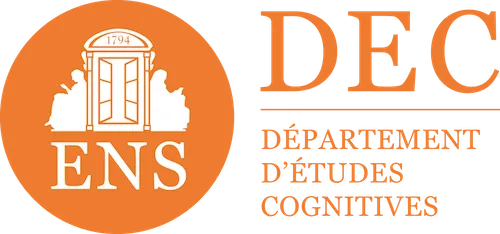

Adaptive Learning: umpteenth fashion or revolution?
If you had to remember only one thing about Adaptive Learning...
Adaptive learning is a process that allows to adjust or customize training parameters Of each Learner, to help them better achieve the objectives defined by the trainer... or by the learner himself.
Its implementation involves work that is broken down into 3 successive steps: the collection of learner data, then its analysis and interpretation, which finally allows the adjustment - personalization of the training or the course.
To maximize the effectiveness of this approach, regardless of the tool chosen, we recommend:
- Take the time to clearly define your learning goals - don't be afraid of detail!
- base your choice of adjustments on hypotheses validated by research - do not panic, you can get support for this.
- regularly consult the evolution of your recovered data, even if it means making adjustments: adaptive learning is not fixed, it is a living process!
What is adaptive learning?
Wikipedia simply defines the concept for us: adaptive learning is a set of techniques to automatically organize human resources and learning materials according to the unique needs of each learner. (See the Full definition of Adaptive Learning, or “Adaptive Learning” on Wikipedia)
Educational content, learning paths, level of difficulty... almost all the properties of online training can thus be adjusted according to its objectives.
More than a fashion, Adaptive learning is therefore a relevant approach, which allows us to think about the coherence of our educational systems with our objectives.
To work, an adaptive learning process is divided into 3 phases:
- Data collection Learners
Examples: click rate or time to answer questions, satisfaction, performance... but also information on their profile: age, function, training history... - Analysis and interpretation. It is now a question of “making your data speak”!
Example: the fact that the learner missed exercise 2, 3 and 4 suggests that he does not master concept X, which needs to be addressed. - Adjusting properties of your training/course, which then allows you to personalize the content or the course
Example: if a learner does not master skill A, C and D, module Y should be offered.
Warning Vigilance : While the last phase is the subject of all attention, the first two are often a bit overlooked, in a sense the submerged part of the iceberg. However, it is precisely on these steps that the quality of the adjustments that your learners will benefit from depends, which is why it is important to prepare them carefully.
Why such an attraction?
Digital technology has allowed the massive dissemination of content, and has thus contributed to the partial democratization of training: the same content can now be used both by students from a major American university and engineers from a developing country that does not have such infrastructures.
However, in order to be truly accessible to all, the distribution of standard content is no longer enough, especially with such a large and diverse volume of learners...
On the ground, The learners not necessarily having the same level of competence at the beginning, they will not all be able to grasp the same educational content. For example, the most novice will need to reinforce certain prerequisites beforehand, while the more expert ones can start with more advanced content directly.
In person, a trainer often has the opportunity to adapt their course or training to the level of their learners and their heterogeneity - sometimes without even realizing it. Reproduce this behavior and flexibility online while maintaining the advantages of digital technology, this is the ambitious promise of adaptive learning that makes all its appeal!
Is it useful? What does the research say?
Good news, research has already focused on the subject, and there are more than a hundred studies on the effectiveness of adaptive learning devices. As is often the case when talking about pedagogy, the answer is more complex than “yes” or “no” and the cursor moves according to the context.
Overall, we can say that the techniques used improve both the memorization of the concepts seen and their application in new situations (1) but only when compared to the same digital device without adapting content, or to lectures given in person to a large volume of learners. On the other hand, no difference in effectiveness was found between adaptive learning devices and courses given to a small group of learners, or individual tutoring.
We could then be tempted to summarize the situation as: mass training -> effective/training with low numbers -> not effective... but our double hat of researchers & pedagogues takes us on another track!
In fact, they are The choices made by content designers at each of the 3 stages seen above, which determine the effectiveness of the approach. Even the most sophisticated device would have no effect if the assumptions on which it is based are not valid.
For example, some solutions make it possible to identify the sensory canal privileged for each learner (sight, hearing, etc.) in order to offer them the resulting learning support, and therefore learn better. However, this theory (called learning styles), as attractive as it is, has never been verified in practice, as a “visual” learner can learn just as well with images as with audio. Goodbye efficiency gains!
On the other hand, theories validated by scientific research make it possible to make a real difference for learners. This is particularly the case with the adaptation of the difficulty: its adjustment according to the level of the learners makes it possible in particular to improve the increase in competence (2), to maintain this improvement over time (3) but also to generalize this improvement to other tasks (4).
On memory issues, to go further, you can also consult our article 3 essential keys to move from memorization to application in eLearning training.

How do you make good use of adaptive learning?
As you will have understood, it is essential to rely on theories proven by experience. This questioning stage takes time, but it makes a real difference. concerning the achievement of the educational goals you have set for yourself.
(Although research work is not always very accessible, some popular books are great, and you should not hesitate to be accompanied by specialists.)
To illustrate our point, we will here present the example of a designer who would like to improve the learning of her learners by adjusting the difficulty of the content.
To prepare for data collection, it is necessary to identify those that give the most relevant information. In our case, it is important to know the level of the learner, and therefore to look at the data produced that he/she provides when solving the exercise.
Good examples: the correct response rate and/or the time taken to give an answer.
Bad examples: usage data (a sequence of clicks on different parts of the interface) or satisfaction data... less enlightening here.
In fact, the adaptive learning approach is therefore closely intertwined with that of educational engineering: It is essential to think about the format of the content in order to recover the data you need. In our case, it is therefore important to add exercises to put into practice the concepts of the training which will allow, in addition to consolidate memory learning, to estimate the skill level of learners.
Regarding data analysis and content adjustment, these two steps can hardly be thought of without one another. Two dominant approaches are emerging and each deserves a dedicated article:
- The approach Theory Driven : you have hypotheses on how to model the difficulty and precise ideas on the adjustments to be made
-> Can be used with little data which makes it faster to deploy - The approach Data-driven : you let the algorithms detect the optimal configurations themselves.
-> A more open approach, which makes it possible to identify patterns of behavior not predicted by a theory, but requiring a large volume of learner·.
The choice of one or the other therefore depends on your context as well as on the means at your disposal.
Our tips for getting the most out of Adaptive Learning
To conclude, it will be understood thatAdaptive learning is a great driver of effectiveness in training... provided you have the means to do so! Beyond the technological implications or choices, It is above all a fundamental pedagogical approach, involving a great deal of thought and analysis, but it can be worth the effort!
Let's summarize our tips for getting the most out of it:
- Before deploying your training/career path, Identify your educational goals and the adjustments that will allow you to achieve them for each learner
- To do this, use theories validated by experience : if your assumptions are wrong, your adaptive learning approach will miss its objective, or even be counterproductive.
- Regularly put “your nose” into analytics to check if the choices made are relevant or still current, and to make changes if necessary. Adaptive learning is not fixed in time, it is normal to make it evolve.
Among the solutions that offer adaptive learning, the Didask LMS platform is doing well because its entire methodology, integrated into its educational artificial intelligence, is based on the recommendations of cognitive science research. You are thus assured that the modules that you will be able to create in record time will use the most appropriate modalities each time, and that the choices for customizing your adaptive learning paths will be based on criteria that are really useful for learning.
It's up to you!
BIBLIOGRAPHY
1) Ma, W., Adesope, O.O., O.O., Nesbit, J.C., & Liu, Q. (2014). Intelligent tutoring systems and learning outcomes: A meta-analysis. Journal of Educational Psychology, 106 (4), 901.
2) Sampayo-Vargas, S., Cope, C.J., C.J., He, Z., & Byrne, G.J. (2013). The effectiveness of adaptive difficulty adjustments on students' motivation and learning in an educational computer game. Computers & Education, 69, 452-462.
3) Choi, Y., Qi, F., F., F.,, Gordon, J., & Schweighofer, N. (2008). Performance-based adaptive schedules enhance motor learning. Journal of Motor Behavior, 40 (4), 273-280.
4) Ahissar, M., & Hochstein, S. (1997). Task Difficulty and the Specificity of Perceptual Learning. Nature, 387 (6631), 401.
Make an appointment directly with our eLearning experts for a demo or simply more information.












